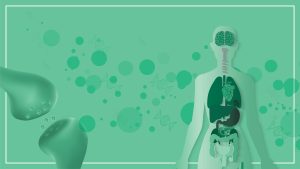When we take a closer look at cannabis use, whether it’s lighting up a joint for relaxation on a Friday night or popping a CBD capsule to ease chronic pain, there’s an incredibly complex system that lies beneath the surface: the endocannabinoid system (ECS). The ECS is the body’s own balancing act, making sure that everything is in perfect harmony. But what happens when we introduce cannabis into the mix?
In this blog, we’ll explore the stars of the ECS, endocannabinoids, and discover how cannabis can mimic our body’s natural endocannabinoids.
A Review of the Endocannabinoid System
The ECS is a complex network of receptors, endocannabinoids, and enzymes that work behind the scenes to regulate a variety of physiological processes, including appetite, mood, pain perception, and your immune system.
There are two types of receptors in the ECS: CB1 and CB2. These receptors act like docking stations, scattered throughout your body, waiting for compounds to bind to them. The body mainly locates CB1 receptors in the brain and nervous system, playing crucial roles in mood regulation, memory processing, and pain perception. More often, CB2 receptors appear in peripheral organs, especially in cells associated with the immune system, suggesting their role in managing inflammation and pain.
Endocannabinoids are the body’s own cannabis-like molecules. The most well-known of these are anandamide and 2-arachidonoylglycerol (2-AG). These endocannabinoids activate cannabinoid receptors, delivering messages like, “Tone down that pain signal,” or, “Let’s lift this mood a bit.”
Enzymes are the clean-up crew that breaks down the endocannabinoids once they’ve delivered their messages. That way, the ECS doesn’t overdo it, and everything stays in perfect balance.
A Closer Look at Endocannabinoids
Diving deeper into our ECS, let’s shine a spotlight on the unsung heroes themselves: endocannabinoids. The body crafts these naturally occurring compounds, its own brand of cannabis, not in the leaves of a plant, but within the cells of your own body. They exist whether or not you use cannabis. Think of endocannabinoids as the body’s internal messengers, buzzing from one cell to another, delivering vital instructions to maintain balance across a vast network of physiological processes.
The most famous among these molecular messengers are anandamide and 2-arachidonoylglycerol (2-AG). Anandamide, often dubbed the “bliss molecule,” plays a pivotal role in regulating mood, appetite, and pain. On the other hand, 2-AG acts more as a workhorse, managing inflammation, emotional states, and even the cardiovascular system.
The body produces these endocannabinoids on-demand, precisely when and where needed, ensuring the ECS can quickly respond to maintain everything from your stress levels to your immune response in perfect equilibrium.
What’s truly fascinating is the way these endocannabinoids interact with the same receptors that cannabis’s THC and CBD latch onto. It’s a testament to the intricate design of the ECS and the subtle balance it maintains. Through the lens of endocannabinoids, we see a system crucial for our well-being and a bridge between our bodies and the natural world, where compounds from a plant can mimic and influence our internal biological processes.

How Do Cannabinoids Act Like Endocannabinoids?
Now that we know how the ECS works, let’s talk about what happens when we consume cannabis. The compounds in cannabis that directly interact with the ECS are called cannabinoids. There are over 100 types of cannabinoids, each with their own unique effects and roles, but the two most common are THC and CBD.
THC’s interaction with the ECS is responsible for the psychoactive effects associated with cannabis. They fit perfectly into the CB1 receptors of the brain, unlocking various effects, from the euphoria and relaxation that many seek to altered senses and time perception. THC can also interact with CB2 receptors, but the effects are much more subtle.
CBD doesn’t bind directly to cannabinoid receptors. Instead, it influences the ECS by enhancing the body’s own endocannabinoids and controlling other non-cannabinoid receptors and ion channels. CBD is known for its potential therapeutic effects, offering a calm influence without the psychoactive effects.
These cannabinoids trick our bodies into thinking they are endocannabinoids, binding to or influencing cannabinoid receptors and altering the release of neurotransmitters in the brain. This act can amplify or adjust the natural functions of the ECS, leading to the wide array of effects cannabis is known for.
The dance between THC, CBD, and the ECS is a delicate one. THC can lead to a stronger, more immediate impact, directly engaging with the ECS and sometimes overwhelming it, leading to effects like euphoria or, in some cases, anxiety or paranoia. CBD, meanwhile, plays a more supportive role, often counteracting some of THC’s intensity and offering a more gentle balancing act on the ECS.
Peake ReLeaf Medical & Recreational Cannabis Dispensary — Helping You Learn All About Cannabis Wellness
Understanding the relationship between endocannabinoids and cannabinoids is crucial for appreciating why different strains of cannabis can have such diverse effects, why individuals might experience these effects differently, and how to choose cannabis products and strains that are right for you.
Looking to learn more about how cannabis interacts with your body? Check out the previous installment of our Cannabis & Your Body series all about cannabinoids!
*The contents of this blog are intended for informational purposes only. Always seek the advice of a physician or other qualified healthcare provider with any questions you may have regarding a medical condition.*






